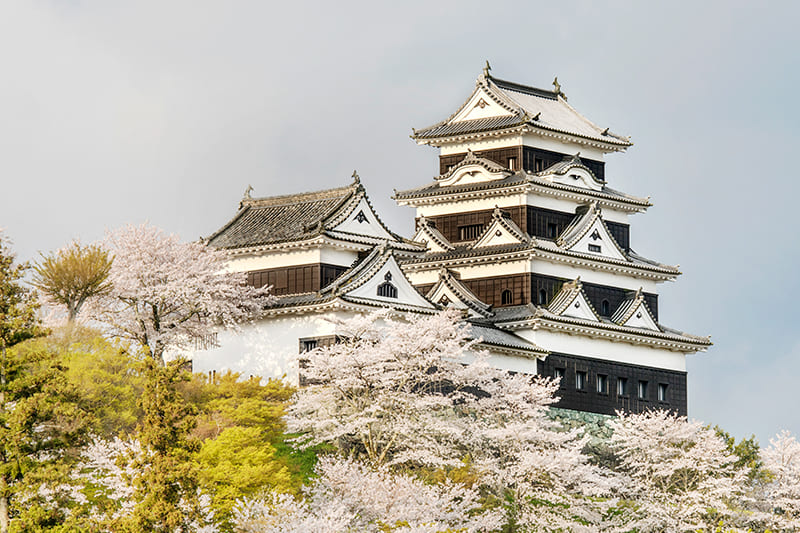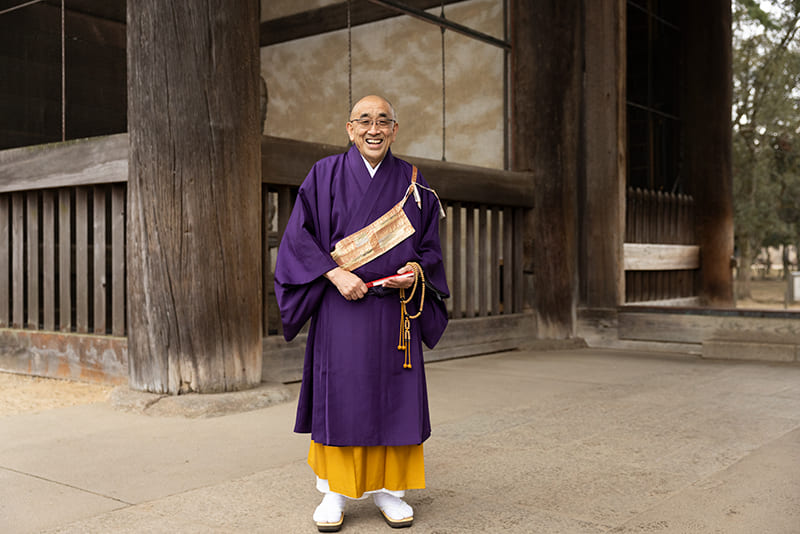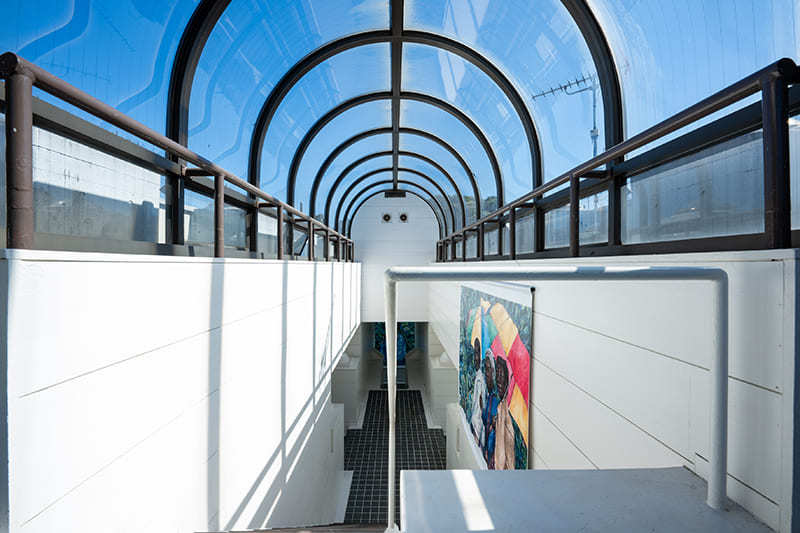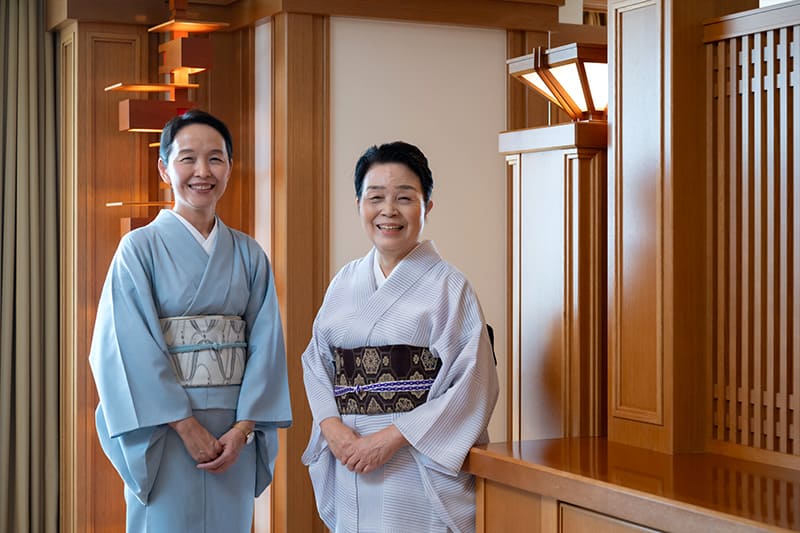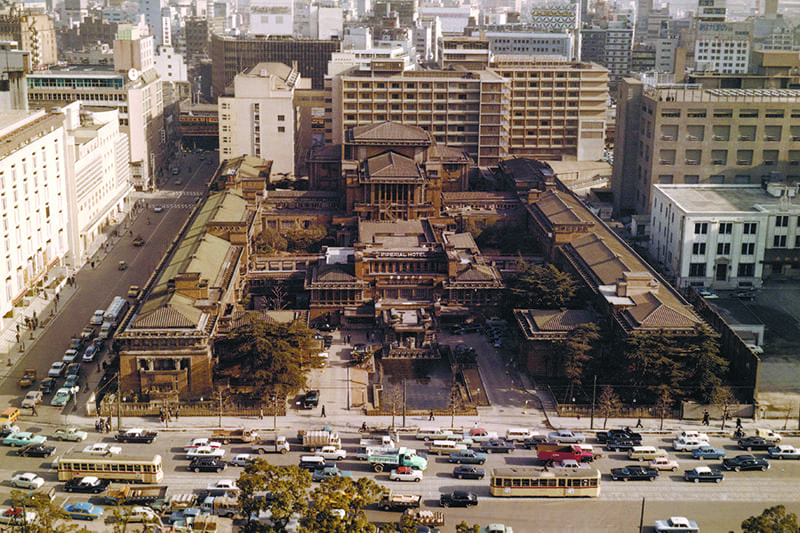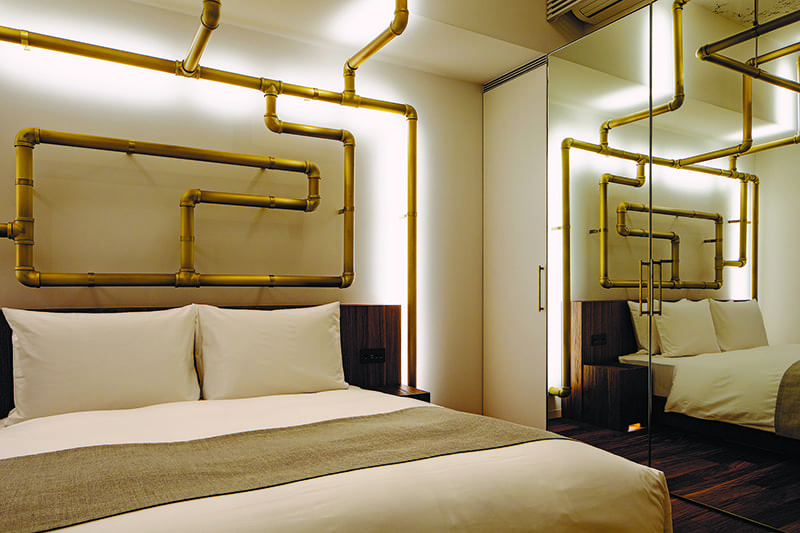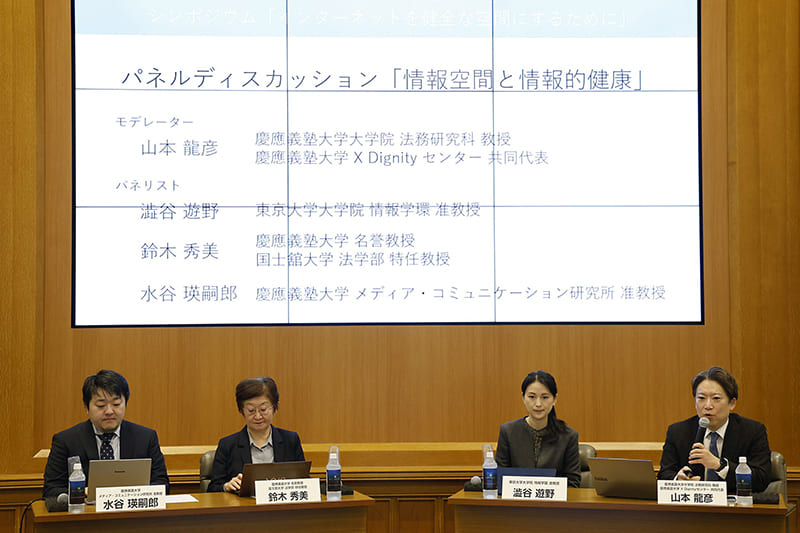April 26, 2024
Cultural properties:A Fujiya Hotel insider’s view
INTERVIEW
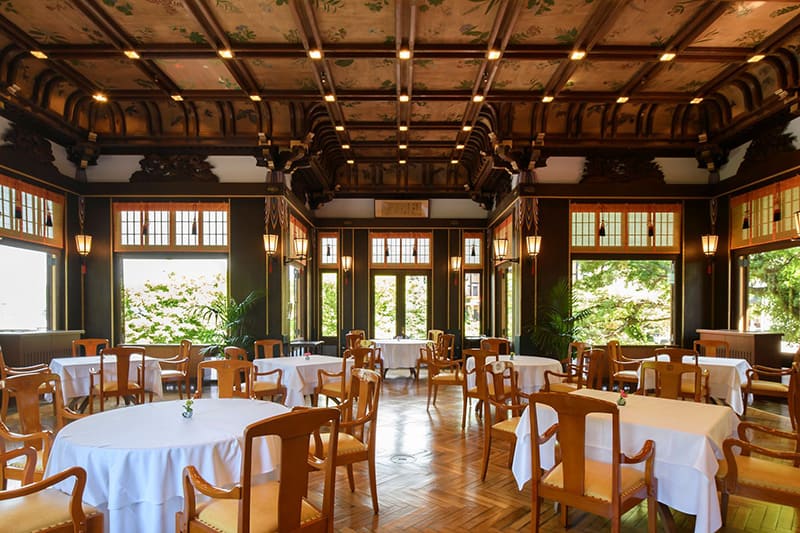
COURTESY: FUJIYA HOTEL
“Cultural properties preserve the real form of history, conveying it to the present and connecting the past with the future. Even though they may all be cultural properties, there is a big difference between things like shrines, temples, castles and museums and on the other hand hotels, where you can eat and drink and then stay overnight,” says Yumi Yamaguchi, a writer and a member of the founding family of the Fujiya Hotel in Hakone, talking about the charms of being able to actually stay at a cultural property.
The Fujiya Hotel was founded in 1878 by Sennosuke Yamaguchi, a native of Yokohama. In this era following the opening of the country, many foreigners had begun to come to Japan. They were limited to foreign settlements such as Yokohama and Tsukiji and were not allowed to travel more than 40 kilometers beyond them without permission. However, revisions to the law in 1874 made it easier for people to go to hot springs and the like for the purpose of medical treatment, as long as they had a doctor’s certificate.
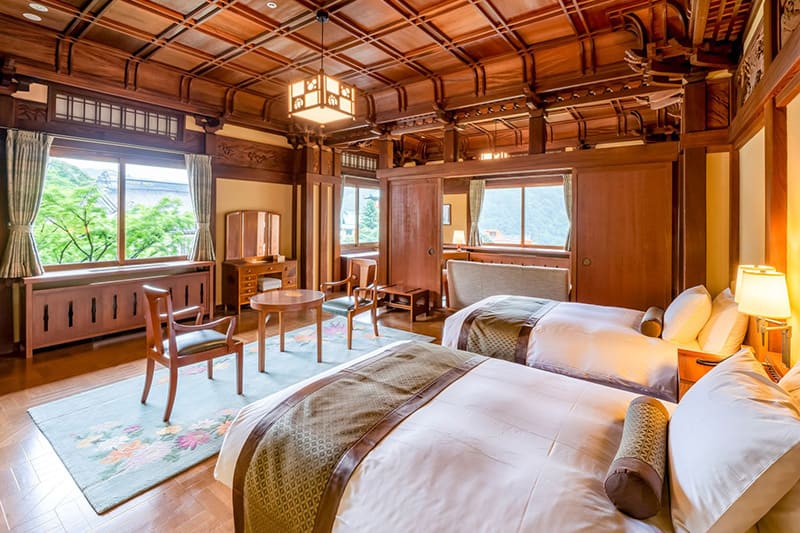
COURTESY: FUJIYA HOTEL
“Hakone was close to Yokohama, where there was a settlement, and was popular among foreigners as a hot spring resort,” Yamaguchi says. “Its proximity led to Sennosuke learning about the place and also made it easy to visit not only on long vacations in summer and winter, but on weekends as well. (Educator, entrepreneur and reformer) Yukichi Fukuzawa, the founder of Keio University, was also paying attention to the development of this area at the time, which is probably why Sennosuke chose to build a resort hotel in Hakone rather than in his hometown of Yokohama.”
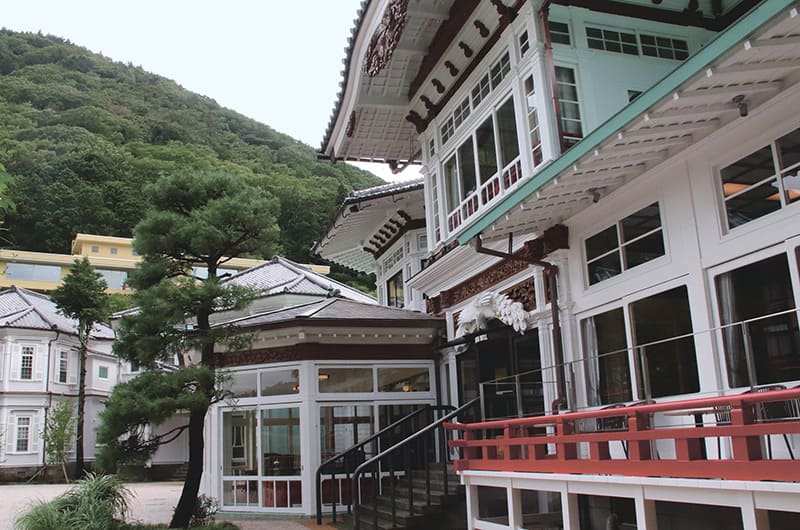
PHOTO: YUMI YAMAGUCHI
FUJIYA HOTEL
Founded in 1878, this historic hotel comprises several buildings from different eras. In 1997, six buildings, including The Main, Flower Palace and several cottages, were registered as tangible cultural properties. Seismic strengthening work was carried out over two years from 2018, though the hotel’s original appearance was retained. The photo below shows the Flower Palace (completed in 1936), which was designed by the hotel’s third president Shozo Yamaguchi in a style reminiscent of shrines, temples and traditional storehouses.
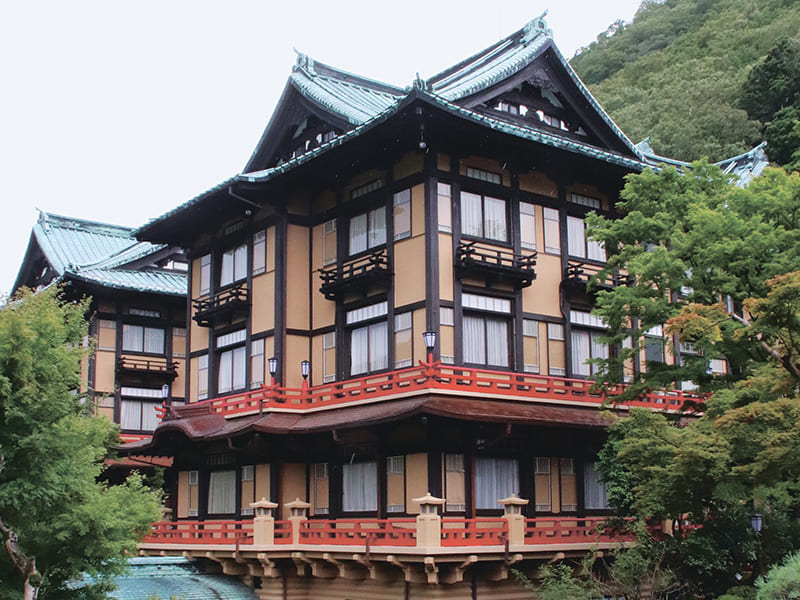
PHOTO: YUMI YAMAGUCHI
As the first full-scale resort hotel in Japan and the oldest hotel retaining its original name and location, Hakone’s Fujiya Hotel maintains a tradition of providing top-tier service to distinguished guests from Japan and abroad.
Founder Yamaguchi built The Main and the Comfy Lodge & Restful Cottage based on foreign buildings in Yokohama. His adopted successor and the hotel’s third president, Shozo Yamaguchi, who was born into the family that founded the Nikko Kanaya Hotel and had a deep knowledge of design, is known for his great attention to detail in his work on temple- and shrine-style buildings like the Fujiya’s Flower Palace. After World War II, the hotel’s fourth president, Kenkichi Yamaguchi, who had married a daughter of the founder and taken the family name, built the Forest Wing in a modernist style. In 1998, the other major buildings were nationally designated as Tangible Cultural Properties.
“From the time you check in to the time you check out, hotels take on a variety of expressions over time. I think being able to experience time travel inside is a big appeal of staying at a cultural property,” Yamaguchi says.
The hotel, which had always stayed open except for the Great Kanto Earthquake and the war, decided for the first time to close in April 2018 for two years and three months in order to carry out seismic retrofitting for the entire complex. This had become necessary due to a 2013 amendment of the Act for Promotion of the Earthquake Proof Retrofit of Buildings making it mandatory for large buildings used by a number of people to conduct a seismic diagnosis, report the results and act if necessary.
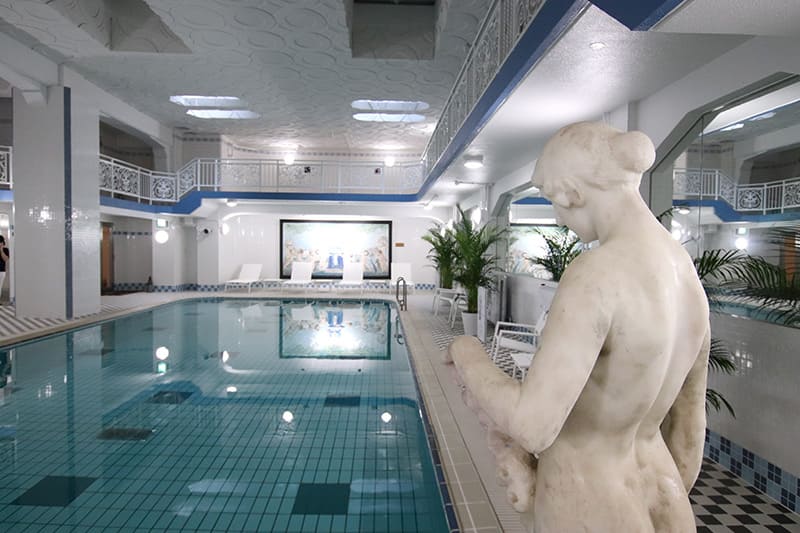
PHOTO: YUMI YAMAGUCHI
“Various plans for demolition and new construction were considered, but it was decided to leave all the buildings in place except for tearing down a kitchen and the Cascade Room, a banquet hall, and building the new Cascade Wing,” Yamaguchi says. “Since each building was considered to be a cultural property, earthquake-resistance and fire-prevention work suitable to each was carried out with care to avoid impairing its value.”
For example, the main dining room, The Fujiya, is located on the first floor of the dining building. A large open space without pillars, with big windows on one side and latticework on the ceiling, the room is typical of the hotel but because the building is a large wooden structure its retrofitting required careful planning and delicate work. All of the panels on the dining room’s walls and ceiling were removed one by one, and seismic reinforcements and fire prevention equipment were installed inside. The ceiling’s sprinklers and smoke detectors were placed in such a way that they are not obvious at a glance. The panels were restored by a Kyoto specialist on cultural property repairs, and everything was returned to its original condition. It is amazing how everything now looks exactly the same as it did before the renovation.
The Fujiya Hotel has been reborn as a hotel equipped with cutting-edge technology and the latest functions while retaining its historic and cultural qualities.
“This long-term seismic retrofitting work was a major project that was unavoidable in order to carry on the idea of ‘staying in a cultural property’ into the future,” Yamaguchi says. “‘Renovation’ is the essential theme. Its success depends on whether designers with a thorough understanding of cultural properties and experts from local and national governments can all work together effectively. In the Fujiya Hotel’s case, the idea was not just to retrofit the building for earthquake resistance, but also to restore it as a cultural property, and this was a model case that worked very well. The hotel was reborn as a place where you can enjoy modern comforts while staying in a historic building. I think that’s great.”
In Hakone, a home built by Yamaguchi’s grandfather Kenkichi in 1930 is also a Registered Tangible Cultural Property. It has a Main House in Western style and a Japanese room that was added shortly after the war and is currently used by overseas tourists as a private guest house, called Yamaguchi House. Yamaguchi says lodging is a very effective means of preserving small-scale cultural assets such as houses.
“It is important to preserve residential and other small cultural properties for future generations by balancing protecting them and operating them as businesses,” Yamaguchi says. “I think this is the least burdensome way of achieving that. If you leave a house vacant it will gradually deteriorate, but if you use it as lodgings it will last as a cultural asset. Of course it is important to preserve large hotels as cultural properties, but at the same time, I think it is also extremely important to consider ways to preserve cultural properties that are privately owned.”
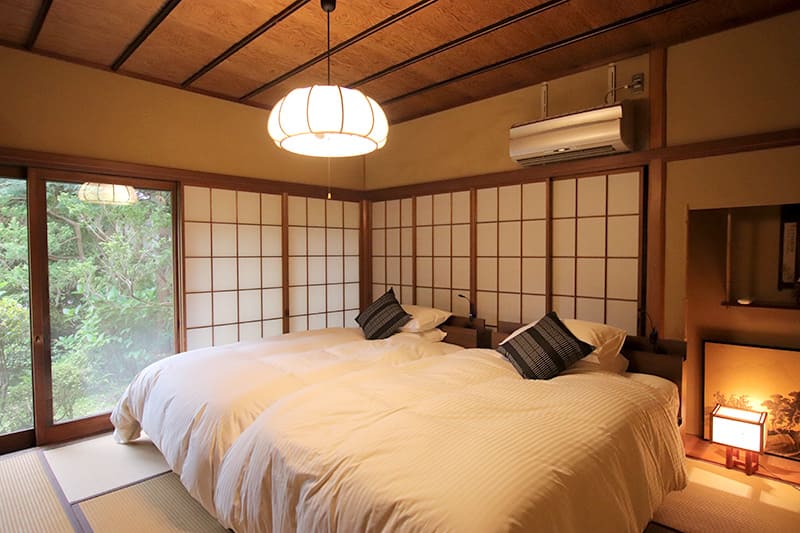
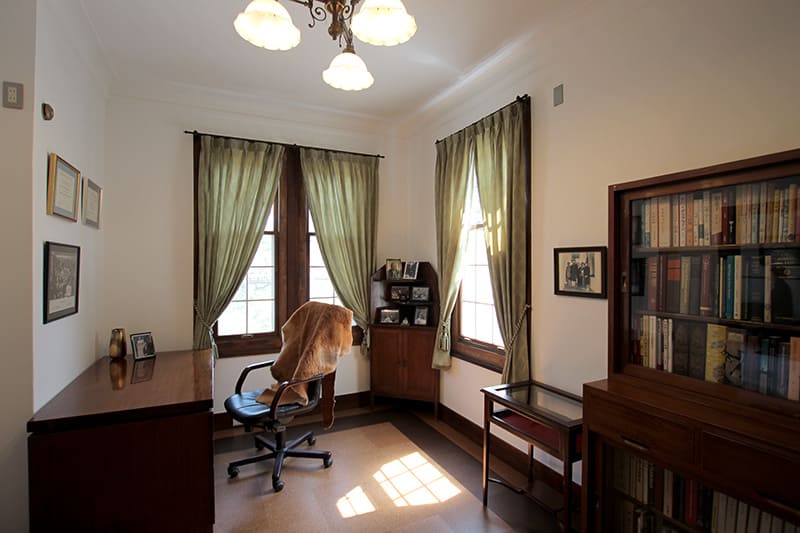
338 Ohiradai, Hakone-machi, Ashigarashimo-gun, Kanagawa Prefecture
https://hakoneyamaguchihouse.com
©YAMAGUCHI HOUSE
YAMAGUCHI HOUSE
First built by Kenkichi Yamaguchi as a private residence in Ohiradai, Hakone, this house was registered as a Tangible Cultural Property in 2015. It is currently known as Yamaguchi House and is available to rent for short stays. It consists of three buildings: a Western-style main building dating from 1930, a sukiya-style Japanese room added shortly after the war, and a Japanese-style annex built in the mid-20th century. The photo on the right shows Yamaguchi’s study. The photo on the left shows a room that was once a Japanese tearoom with an alcove.
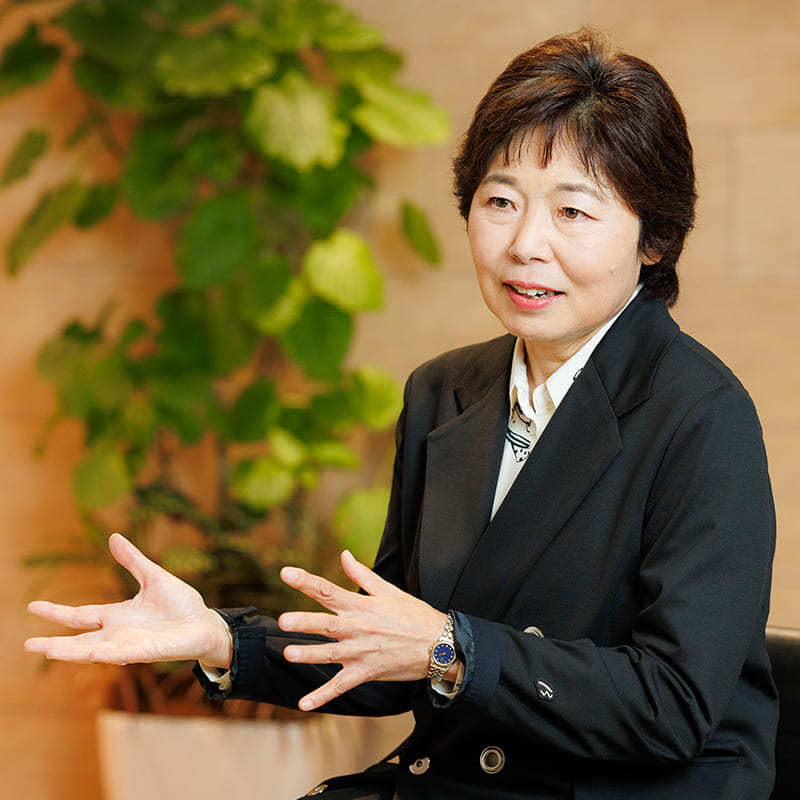
YUMI YAMAGUCHI
Born in 1962 in the Kanagawa town of Hakone, Yamaguchi writes on a wide range of topics, mainly travel and hotels. She won the Shogakukan Nonfiction Grand Prize in 2012 for “Eugene Smith: 1,100 Days in Minamata.” She is the granddaughter of Kenkichi Yamaguchi, the fourth president in the family line of the Fujiya Hotel in Hakone, and has written many books about it and other classic hotels. She also manages Yamaguchi House.
PHOTO: HARUO MOTOHASHI
富士屋ホテル創業家出身の作家が語る、文化財ホテル。
「文化財というものは、歴史がリアルな形で残り、歴史を今に伝えてくれるもので、過去と未来を結ぶものです。
同じ文化財でも神社仏閣やお城や博物館とホテルの大きな違いは、そこで飲食ができてその後に泊まることができることです」。箱根にある富士屋ホテルの創業家出身で作家の山口由美は、文化財に泊まる醍醐味をこう語る。
1878年創業の富士屋ホテルは、1998年にそのほとんどが国の登録有形文化財になった。文化財ホテルを未来へと繋げるために2018年、開業以来初の長期休業に踏み切り、全館の耐震修復工事を敢行、建物ごとに文化財的価値を損なわないように考慮しながらの耐震と防火対策工事は2年3ヶ月に及んだ。昔の姿はそのままに、最先端の技術で最新の機能を備えたホテルに生まれ変わった富士屋ホテル。文化財が宿泊施設として継承されていくには改築改修は不可欠なテーマだと山口は言う。彼女は、同じく文化財である祖父の家を、一棟貸しの宿に転用し運営している。これも文化財登録された住宅を後世に残していく方法論のひとつだと語る。
Return to Sustainable Japan Magazine Vol. 35 article list page

